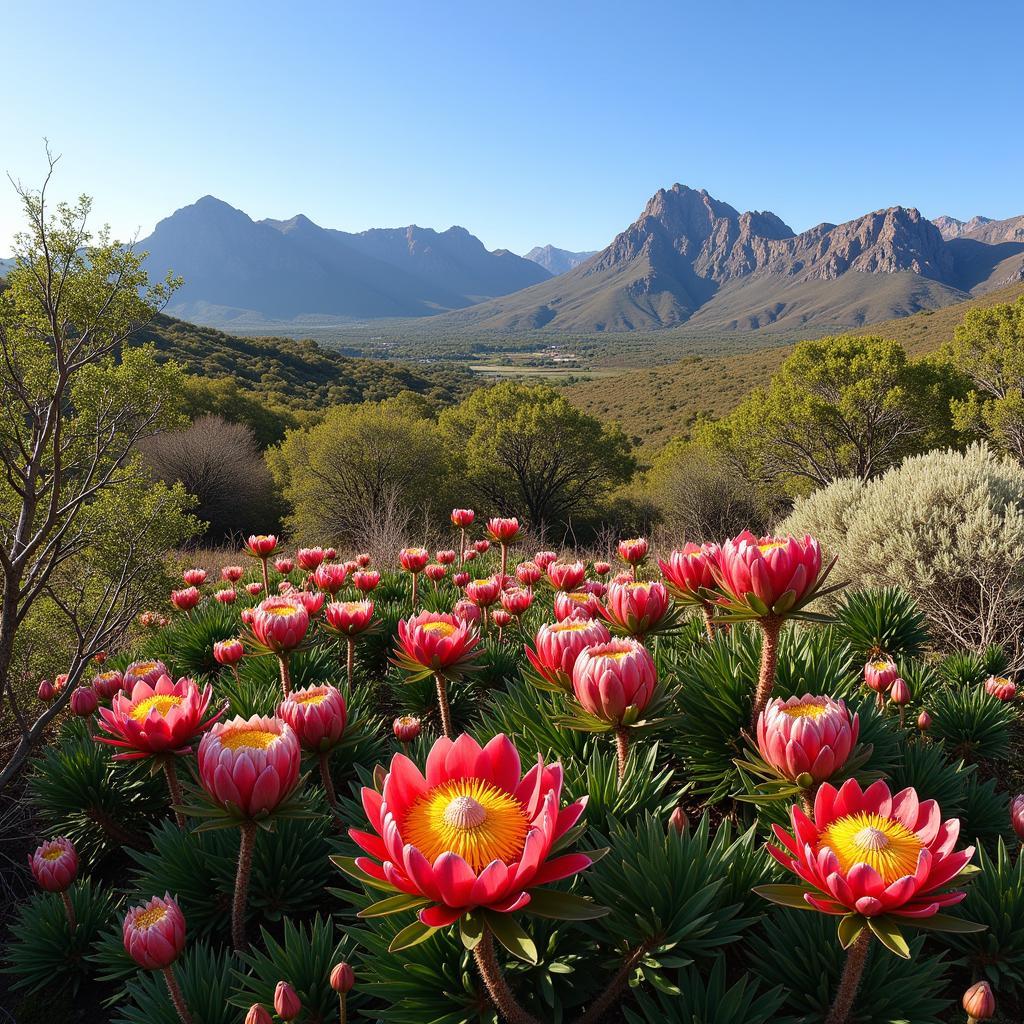About African Plantlife: A Journey Through a Diverse Botanical Wonderland
Africa, a continent brimming with vibrant cultures and breathtaking landscapes, is also home to an astonishingly diverse plantlife. From the towering baobabs of Madagascar to the delicate fynbos of South Africa, the continent’s flora is as varied as its people and traditions. This article delves into the wonders of African plantlife, exploring its unique adaptations, ecological significance, and cultural importance.
Unveiling the Secrets of African Plantlife
African plantlife has evolved remarkable strategies to thrive in a wide range of environments, from arid deserts to lush rainforests. The iconic Welwitschia mirabilis of the Namib Desert, for example, can survive for centuries on minimal rainfall, while the vibrant orchids of the Congo Basin flourish in the humid understory. Understanding these adaptations offers a glimpse into the intricate relationship between plants and their environment.
The sheer diversity of African plantlife is staggering. The continent boasts an estimated 45,000 plant species, many of which are endemic, meaning they are found nowhere else on Earth. This botanical richness is crucial for maintaining the ecological balance of the continent and providing essential resources for both humans and wildlife.
The Importance of African Plantlife in Local Cultures
African plantlife plays a vital role in the traditions and livelihoods of many communities. From medicinal plants used in traditional healing practices to food crops that sustain millions, plants are deeply interwoven with the cultural fabric of the continent. For example, the shea tree (Vitellaria paradoxa) provides essential oils and fats used in cosmetics and cooking across West Africa.
The use of plants in traditional medicine is widespread across Africa. Knowledge of medicinal plants is often passed down through generations, with local healers playing a crucial role in maintaining this valuable heritage. Many modern pharmaceuticals are also derived from African plants, highlighting the importance of preserving this botanical treasure trove for future generations.
“African plants are not just beautiful; they are the lifeblood of many communities, providing sustenance, healing, and a deep connection to the land,” says Dr. Fatima Mohamud, a renowned ethnobotanist from Kenya.
African Plantlife: Facing Challenges and Conservation Efforts
Despite its resilience, African plantlife faces numerous threats, including habitat loss, climate change, and overexploitation. Deforestation for agriculture and logging, along with the expansion of urban areas, are putting immense pressure on many plant species. Climate change is also altering rainfall patterns and increasing the frequency of droughts, posing significant challenges for plant survival.
Recognizing the importance of preserving this invaluable resource, numerous conservation initiatives are underway across the continent. These efforts focus on protecting endangered species, restoring degraded habitats, and promoting sustainable use of plant resources.
“Protecting African plantlife is not just about conserving biodiversity; it’s about safeguarding the future of the continent,” says Dr. Joseph Adebayo, a conservation biologist from Nigeria.
 South African Fynbos Landscape
South African Fynbos Landscape
Conclusion: Appreciating and Protecting African Plantlife
About African Plantlife, there’s a world of wonder to explore. From the iconic baobab to the humble yet essential grains, the continent’s flora is a testament to the power of adaptation and the interconnectedness of life. Understanding and appreciating the diversity and importance of African plantlife is crucial for ensuring its conservation for generations to come.
FAQ
- What is the most iconic plant in Africa? While many might say the baobab, Africa has numerous iconic plants, from the aloe vera to the acacia. It depends on the region and its specific flora.
- How is climate change affecting African plantlife? Climate change is altering rainfall patterns and increasing drought frequency, threatening many plant species.
- What are some examples of medicinal plants from Africa? Aloe vera, rooibos, and the African potato are just a few examples of medicinal plants from Africa.
- What is being done to protect African plantlife? Numerous conservation initiatives are working to protect endangered species, restore habitats, and promote sustainable plant use.
- Where can I learn more about African plantlife? Botanical gardens, online resources, and books on African flora are excellent resources.
- How can I contribute to the conservation of African plantlife? Supporting conservation organizations, making sustainable choices, and educating yourself are great ways to contribute.
- What are some examples of endemic African plants? The Welwitschia mirabilis and many species of proteas are endemic to Africa.
Need support? Contact us 24/7: Phone: +255768904061, Email: [email protected], or visit us in Mbarali DC Mawindi, Kangaga, Tanzania.

